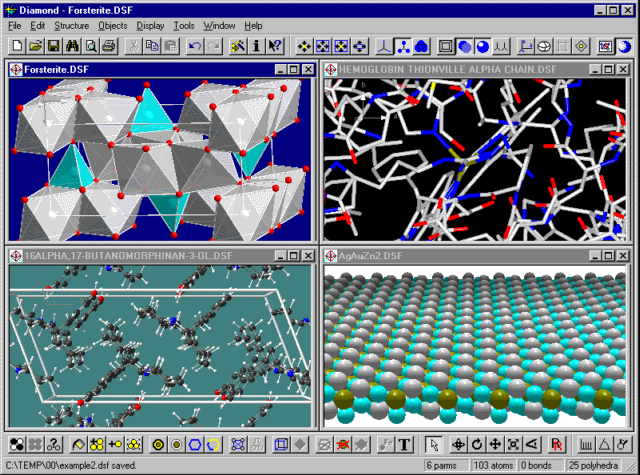|
|
|
|
|
DIAMOND HIGHLIGHTS TOUR |
||
Useful for all Kinds of Crystal StructuresAlthough Diamond has special features for inorganic structures, it is useful for all kinds of crystal structures, from intermetallics to small organic molecules, from zeolites to proteins. There are almost no limits regarding the number of atoms in the parameter list, the number of created atoms, bonds, polyhedra, etc. (The real limitation on your computer will rather be RAM and CPU speed.) Structural data (cell parameters, space group, atomic parameters with displacement parameters, some geometric parameters, bibliographic data) may be entered or edited manually but can also be read from:
Diamond recognizes the file format automatically. Besides this, it offers a search function, where you can search for chemical, crystal, and bibliographic data within files on your computer. The screenshot below shows four structure windows in Diamond with...
...(upper left:) Forsterite (Mg2SiO4) from Inorganic Crystal Structure Database (ICSD), Collection Code 15627; |
||
|
|
| Page last modified February 10th, 2003 - Copyright © CRYSTAL IMPACT 1997..2003 - All rights reserved |
